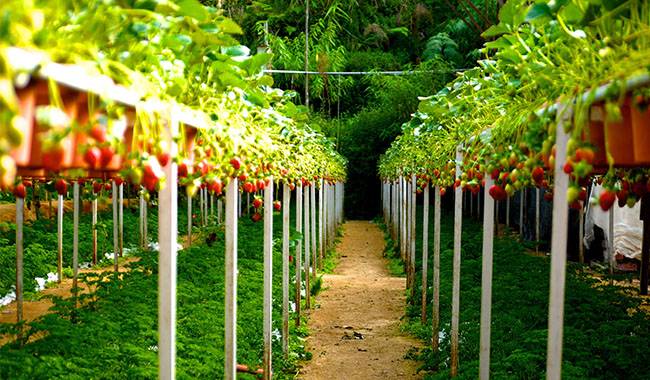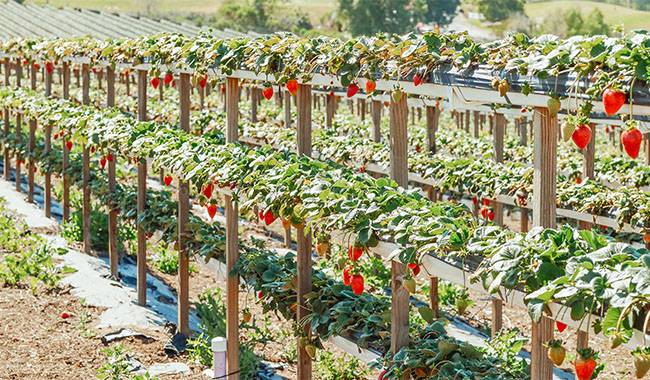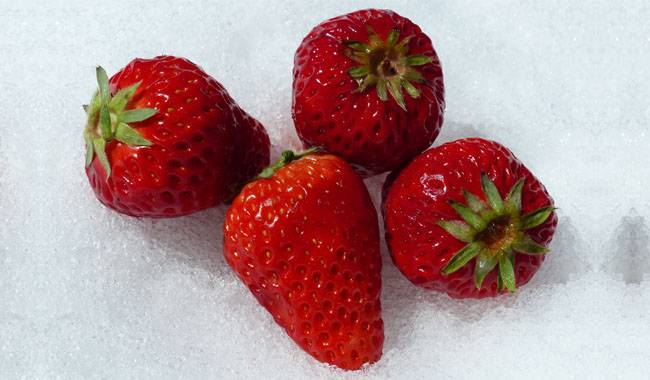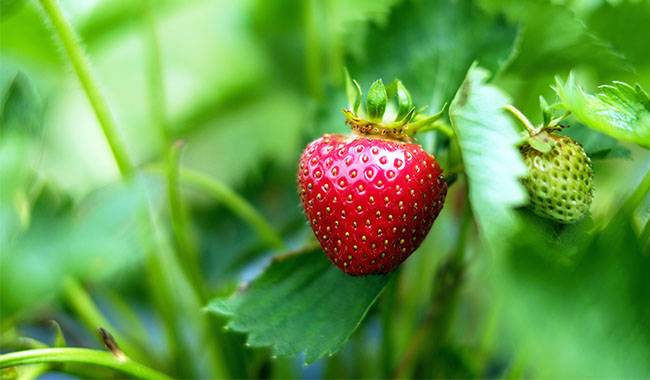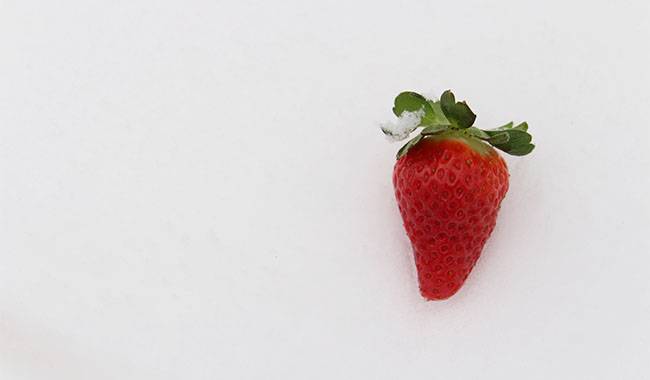
Strawberries (large-fruited strawberries) are a plant that requires constant attention and care. From July to August after the harvest, strawberries must be processed and fertilized in order for the plant to form buds. This is an important stage of strawberry care and next year’s harvest depends on it.
How to winter strawberry plants? You need to make sure that our plants are winterized. Strawberries are hardy plants, and if you have recommended varieties suitable for the growing area, then you do not have to worry about overwintering your plants.
However, strawberry bushes can die during harsh, snowless winters or winters with drastic temperature changes, so measures to increase winter hardiness will not be superfluous.
Inexperienced gardeners often ask this question: “Should I take care of strawberries in autumn? After all, she has already borne fruit and next year will be a new harvest year, so in the spring we will fertilize.
Strawberries must be taken care of. About fertilizers and strawberries in the fall promote their safe overwintering, overwintering plants spend strength to recover and form crops.
When is the best time to take care of strawberries? Depending on the weather conditions, strawberries are sometimes cared for in September and even October at a stable positive temperature of at least 8-10 ° C (46.4-50 ° F).
CARE OF STRAWBERRIES IN AUTUMN
In order for strawberries to overwinter well, it is necessary to do the following preparations.
- Remove the beards that grow, they weaken the plant. It is not recommended to loosen the soil and dip the seeds of bush strawberries in late autumn. If the roots are damaged during loosening, it will adversely affect the plant’s winter hardiness.
- Cut off old and fallen leaves that show signs of diseases and pests. Leaves with signs of disease must be burned or taken away from the site.
Green leaves must not be removed! The plant will spend a lot of energy to grow new ones. And it will affect winter hardiness and delay fruiting the following year.
CARRY OUT PEST AND DISEASE CONTROL
How to treat strawberries against diseases in autumn?
Signs of strawberry fungal disease If during the season the plant is affected by gray rot, various spots, which is a fungal disease, then it is inevitable to take care of strawberry bushes with a 1% Bordeaux solution.
Unfortunately, many gardeners do not pay attention to the signs of strawberry mites, but it is one of the most dangerous pests of this culture.
The mite itself is invisible to the naked eye and the leaves of the infested plants shrivel up and die. The mite makes the plant very weak and, as a result, the fruit of the strawberry is greatly reduced.
Strawberry mite control of this pest is quite difficult and it is necessary to treat it several times during the season.
Therefore, at the appearance of signs of strawberry mites, the plants should be taken care of with pesticide preparations. Treatment of mites can be combined with the treatment of diseases, for which it is necessary to add 100 g of colloidal sulfur to 10 liters of pesticide mixture and spray the plants with this composition.
Pest control of strawberries in autumn is very important to prevent the spread of pests and diseases, so it should not be neglected.
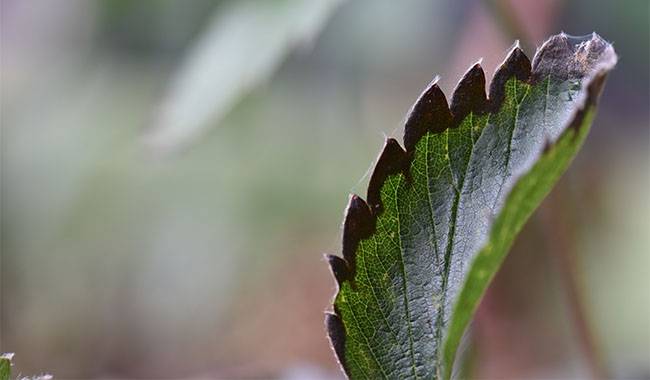
HOW TO FERTILIZE STRAWBERRIES IN AUTUMN
When fertilizing in autumn, it is necessary to use fertilizers that contain phosphorus, potassium, and an increased dose of organic matter. Strawberries are very fond of organic fertilizers.
It is not advisable to apply nitrogen fertilizer in autumn, because it will provoke the growth of the plant in the period when strawberries should be prepared for winter.
Among mineral fertilizers for strawberries in autumn, potassium sulfate (potassium sulfate) and superphosphate (use as directed) are usually used. You can also use special autumn fertilizer – general purpose or special autumn fertilizer for berry crops or strawberries.
Fertilizers are very good when they contain trace elements, and strawberries respond very well to their application.
Fertilizer can be spread on strawberry bushes in the dry form or applied in the dissolved form. Fertilizers applied in liquid form are absorbed by plants more quickly, but dry fertilizers have a longer duration of action.
Therefore, experienced gardeners combine the two methods. In addition to feeding the plants at the roots, foliar feeding of strawberries in autumn is also very effective, especially for later treatments.
Fertilizers applied directly to the foliage have a faster impact on the plants. When spraying, use a water-soluble compound fertilizer, the concentration of which is usually 2-3 times lower than watering under the roots.
If you do not support the use of mineral fertilizers, then in the fall you can bring strawberry compost (necessarily mature), humus, which will also serve as a bed of mulch for the plants.
You can also introduce wood ash: in dry form – about a handful per bush, and in dissolved form – one cup per bucket of water. The ash works well as a fertilizer for strawberries in the fall.
In addition to saturating the plants with nutrients, ash helps to deoxygenate (reduce acidity) the soil, the prevention of fungal diseases, and ash repel insects – pests such as raspberry – strawberry weevil.
Dry chicken or cow manure can be placed between rows with strawberries, not more than 2 kg per square meter, otherwise, it can provoke the growth of the plants. Such an organic fertilizer will be useful in the spring after the snow melts.
If you regularly use pine needles or sawdust as mulch, be sure to be aware that they acidify the soil. Therefore, it is necessary to apply ash or dolomite powder to the strawberry bed.
Agricultural fibers for strawberry mulch also protect the roots of the plants from frost damage. When planting plants on mulching material, it is important to follow the technique exactly.
Strawberries do not require additional mulching. If you are concerned that your plants may not overwinter well, you can put small branches between the bushes and remove the annuals from the bushes, they help delay the snow near the plants.
The strawberry bushes themselves do not need to be covered with anything, otherwise, the plants may die from hibernation.
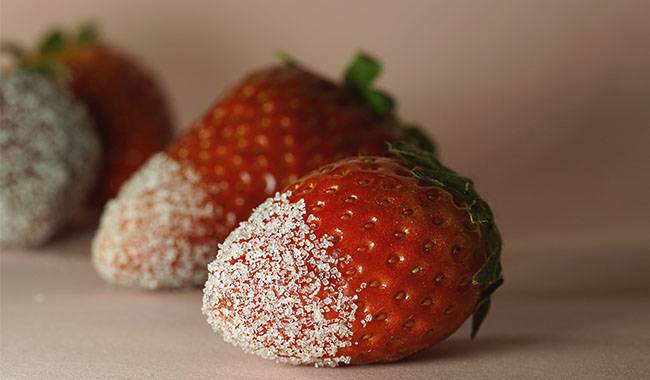
SHELTERING TECHNIQUES
Strawberries should be planted with healthy leaves at the beginning of winter, which will be excellent protection against bud freeze. In autumn you should follow the rules of agricultural techniques, application of fertilizers, and removal of pests.
At the end of summer, it is recommended to loosen the ground near the bushes. Do not transplant strawberries late. It is better to harvest weeds in spring as well. Snow does not freeze the soil, so it can be used as optimal insulation for plants.
A mulch consisting of humus, reeds, peat, pine, and spruce needles and reeds prevents the soil from cracking.
It should be stocked in bags or simply dumped near the strawberry bed. The amount of mulch to be used should be one bag for every 24 to 26 bushes of the plant.
The dry mulch should be hugged in a circle and covered on all sides with adult strawberry bushes, the layer should be about 10-15 cm (3.93-5.9inch).
After the beginning of the first frost, it is necessary to cover the strawberries. It is important to take into account such factors as the geographical location and its microclimate.
To protect your garden strawberry bushes, cover them with plenty of straw. Just make sure that there are no seeds that can attract rodents or sawdust in the straw.
To properly shade the plants, use a material such as agricultural fiber.
Strawberry mulch should be about 6-8cm (2.36-3.14inch) thick. If it snows in the winter, uncovered bushes may die due to frost.
To retard the melting of snow in the garden, it is recommended to use a large box or other shade at hand to cover the snow.
As heat radiates out, plant bushes should be released from the mulching material so that they have enough room to grow and develop properly.
Agrofiber can also help combat the negative effects of spring frosts on strawberries. They need to cover the plants at night and remove the material in the morning to allow bees to pollinate the plants.
Experts recommend planting strawberry varieties that are best suited to your area, if possible. If the snowpack is large enough, they may overwinter even without special shelter.
SHELTER MATERIALS
Many gardeners are worried about an important question – how to cover strawberries for the winter?
In snowless winters, leaves, hay, straw, and branches of spruce will be the best plant material to help you cover and protect your strawberries from frost damage.
Experts say that spruce branches are the best choice, under which you can place dry raspberry branches or grasses in order to provide air passage for the plants.
Another proven plant material is pine needles. It is quite breathable, has insulating properties, and prevents strawberry bushes from hibernating.
Mature plants should be sprinkled with pine needles as if dipped in a circle, and young bushes can be completely covered.
Even if there is no snow at all, the thermometer column will drop to 25 degrees below zero, and protecting the ground in this way will preserve enough heat.
If needles or lap needles are not available, a commercial mulching material can be used.
It will not allow rodents to settle near bushes, it is breathable, provides access to light and water, and can offset unwanted temperature differences.
Even in severe frost conditions, the temperature under this material will be much warmer than in open spaces.
This air-drying method is quite good for beds with smaller areas. In addition to the above-mentioned industry covering materials, you can also use foil.
Some gardeners have adapted to using these materials without arcs to cover strawberries. However, experts do not recommend covering plants with materials without arcs because of the risk of icing at the point of contact.




